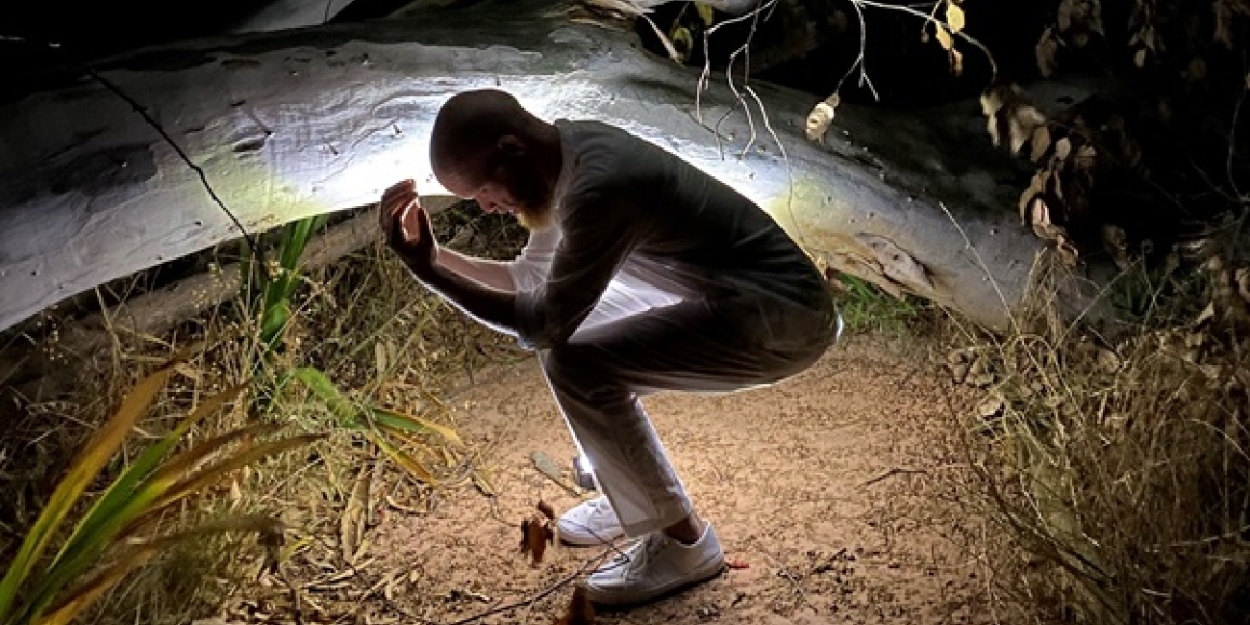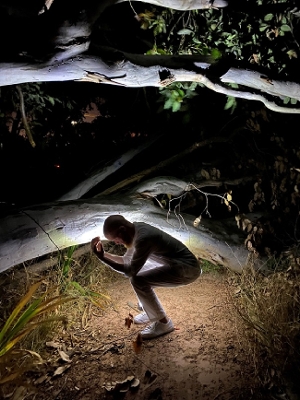Interview: Jaqueline Dommisse of EAT THE STARS at South African Astronomical Observatory on Why this Show Will Leave You 'Starry-eyed'
This immersive theatrical experience runs as part of the IN THE DARK season.


EAT THE STARS runs as part of the IN THE DARK season, which in turn takes place from 15 to 25 February at venues around Cape Town, and which is presented by Theatre Arts. This innovative piece of theatre is a “meditation in dance, poetry, and space on the metaphor of human stories in a cosmic context. The light we’re made of. The light inside. The light we are. And time, deep time, time and space; measured in light years. A live performance in response to space. The site, the night sky, and the universe. A site-responsive performance at the South African Astronomical Observatory in Observatory, Cape Town.
This production features actors and dancers, Roshina Ratnam, Siphenathi Mayekiso, John Cartwright, and Qondiswa James; violinist, Elinor Speirs; and performance-artist, Jutta Holzapfel.
Broadway World asked Jaqueline Dommisse, the creator and director of EAT THE STARS, a few questions about this literally out-of-this-world piece.
BWW: Tell me a little bit about the show.
Jaqueline Dommisse: I describe EAT THE STARS as a meditation in dance, poetry, and space on human stories in a cosmic context. This is not a play, we will not be telling one story, or communicating any particular message. Rather, we will invite our audience to come with us on a flight of the imagination: through the gardens and under the trees, into the ancient observatory, and up out into the night sky. And perhaps to ponder the same question we did: What is my heartfelt response when I look up at the stars?
BWW: What made you decide to host EAT THE STARS at the South African Observatory?
JD: The call from Theatre Arts for the IN THE DARK Season, was to imagine making a work of theatre that was not reliant on electricity. All the ways I know to create a magical experience for an audience in a traditional theatre space involve using electricity – to power the lighting rig and to play and amplify sound and music. We create worlds and locations with the power of our shared imagination. By inviting our audience to experience a performance in an alternate space, the environment becomes a character in the production. Instead of imagining a setting for our story, we are inhabiting it. We invite the audience to immerse themselves in both the art and the place where the art happens.
The South African Astronomical Observatory is a hidden gem in Cape Town. A place where cutting-edge astronomical research and scientific knowledge are developed and shared. The focus is on knowledge with research, teaching, conferences, and a sophisticated bank of computers live-streaming data from SALT (The South African Large Telescope) in Sutherland. It is also a place of natural beauty – bordered by the Liesbeek and Black Rivers and providing a view of the city from beneath a canopy of trees. The campus houses a museum of astronomical science, with a library and a beautifully preserved almost 200-year-old telescope. The SAAO holds Open Nights twice a month where members of the public can attend a lecture, visit the museum and, if the sky is clear, gaze at the planets and stars through powerful telescopes under the guidance of volunteers.
We are so grateful for the openhearted welcome we have received from our hosts. Busy scientists have considered our proposal and created a place for us to dream. If you look on the SAAO website you will find not only information about scientific endeavours but also an interest in indigenous African knowledge and an awareness of ancestral ways of explaining and interpreting the night sky. In conversation with Sivuyile Manxoyi, the Science Engagement Manager at SAAO, we agreed that there is more than one way of responding to the night sky – with mathematics and astrophysics and also with art.
BWW: Do you think theatre has a role to play in keeping our national heritage sites ‘alive’ and vice versa? Should this partnership be something we see more often in South African theatre scene?
JD: Several years ago, I was lucky enough to direct a production of BLUEBEARD at the Lion’s Den in the abandoned zoo on the slopes of the mountain, below Rhodes Memorial and got a taste for making theatre in unexpected spaces. I believe that engaging with heritage sites allows us to interrogate our history and challenge narratives about land ownership and whose stories get told and whose get erased. Artists can invite audiences to consider a new perspective on old buildings and contribute to the de-colonising of public space.
BWW: What would you like audience members to take away from EAT THE STARS?
JD: We hope you will leave with renewed awe for the mysteries of the night sky and the magical tenacity of the human spirit. At the very least, you’ll have an unusual night out and an opportunity to ponder this small intersection of science and art.
BWW: What role (if any) do you think theatre has in SA’s energy crisis?
JD: As with all industries that are reliant on Eskom, we need to explore all sorts of possibilities. The cost of running big theatres or festivals on generators and petrol is unsustainable, so we need to think laterally. What that means, I am not sure – but I do know that many people, far more clever than I, are all tackling a range of solutions.
BWW: In terms of the creation of EAT THE STARS, what was the process like?
JD: The process was entirely collaborative, devised by the company. My main task as a director was assembling a cast of incredible performance artists – dancers, musicians, actors, fire artists – and then getting out of their way. EAT THE STARS is devised through improvisation and each live performance will include an element of improvisation. The work is “site-responsive”. We have a template or a roadmap: the performers will have learnt their words, and everyone will know what text, music, and movement happens in which place, but every night will be different as each artist responds to what is offered – not only by each other but also by the land, the weather, the temperature, the wind, and the sky.
BWW: Describe the play in three words.
JD: Stargazing with your heart (oops, four words)
EAT THE STARS runs at the South African Observatory, as part of the IN THE DARK season, from 22 to 25 February. Tickets are R120 per person and are available on the Theatre Arts website.
Comments

Videos
